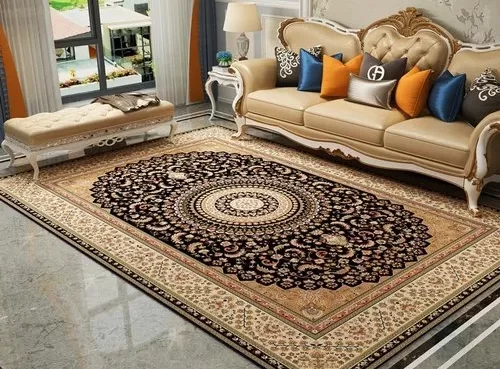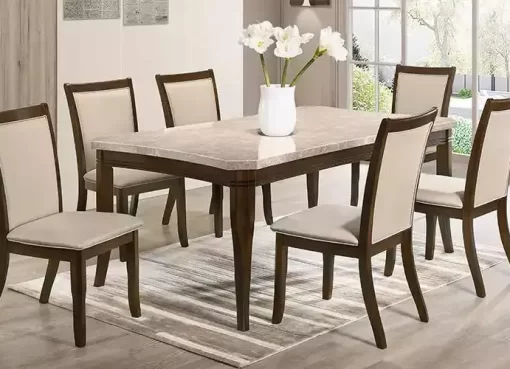Ever notice how a walk in the park can just… reset your brain? That feeling of calm, the quieting of a buzzing mind? It’s not just in your head. It’s a deep, biological connection we have with the natural world. Biophilic design is all about bringing that feeling indoors. It’s the art and science of weaving nature into our built environments.
And honestly, in our modern, screen-saturated lives, our homes need to be more than just a roof over our heads. They need to be sanctuaries. Places that actively support our mental wellness. Let’s dive into how you can use biophilic design principles to create a home that doesn’t just look good, but truly feels good for your soul.
What is Biophilic Design, Really?
At its core, biophilia means “love of life.” The term was popularized by biologist E.O. Wilson, who suggested we have an innate affinity for the natural world. Biophilic design is the practical application of that idea. It goes beyond sticking a potted plant in the corner—though that’s a great start.
It’s about creating a multi-sensory experience. It’s the dappled sunlight on your floor, the sound of water, the texture of a woven rattan chair, the smell of fresh pine. It’s designing for all your senses, not just your eyes. This holistic approach is what makes it so powerful for mental health, reducing stress and boosting creativity in a way that minimalist or purely aesthetic design often can’t.
Core Biophilic Design Elements You Can Use Today
1. Direct & Indirect Nature
This is the most straightforward category. It’s about incorporating living, breathing elements of nature into your space.
- Living Walls & Plant Groupings: Instead of one lonely succulent, create a cluster of plants of varying heights and leaf textures. A living wall in a kitchen or bathroom can be a stunning, oxygen-boosting focal point.
- Water Features: The sound of moving water is incredibly soothing. You don’t need an indoor koi pond. A small tabletop fountain or even a recirculating waterfall on a wall can introduce that calming, acoustic element.
- Natural Light & Air: This is a big one. Maximize windows, keep them clean, and use light, airy curtains. Open those windows whenever you can! The cross-ventilation and the sound of birdsong? Pure therapy.
2. Natural Analogues & Patterns
What if you don’t have a green thumb? No problem. This is where you mimic nature. It’s about evoking the outdoors through materials, colors, and forms.
Materials Matter: Think wood, stone, bamboo, cork, and linen. A jute rug, a live-edge wooden coffee table, stone countertops. These materials aren’t just sustainable; they have a tactile warmth and visual complexity that plastic and laminate simply lack.
Colors from the Earth: Ditch the harsh neons. Embrace a palette drawn from nature. Soft greens, sky blues, earthy browns, stone grays, and sandy beiges. These colors are inherently calming and grounding.
Complex Patterns: Nature is never perfectly uniform. Look for fabrics, wallpapers, or art that feature fractals—those intricate, repeating patterns found in ferns, snowflakes, and river systems. Our brains are strangely soothed by this natural complexity.
3. The Space & Place Itself
This is the more subtle, psychological layer of biophilic design. It’s about how the space is arranged to make you feel safe and connected.
Prospect & Refuge: This is a primal one. “Refuge” is a cozy, protected spot where you can relax without being startled (think a reading nook with a high-backed chair). “Prospect” is an unimpeded view over a space, allowing you to see what’s coming. A chair positioned to see the entrance of a room satisfies this need perfectly, making you feel secure.
Mystery & Journey: Create a little intrigue. A partially obscured view that makes you wonder what’s around the corner—like a room divider made of plants, or an arched doorway. It encourages curiosity and movement, making your home feel more dynamic and engaging.
A Room-by-Room Biophilic Design Guide
| Room | Key Biophilic Elements | Mental Wellness Benefit |
| Bedroom | Blackout curtains for circadian rhythm; organic cotton bedding; a small grouping of air-purifying plants (like snake plants); wood accents; earthy color palette. | Promotes deeper, more restorative sleep and reduces pre-sleep anxiety. |
| Home Office | Position desk for a view outside (if possible); use a natural light-simulating lamp; incorporate wood and stone textures; keep a desktop fountain for calming sound. | Reduces mental fatigue, boosts focus and creativity, and combats the stress of long work hours. |
| Living Room | A large, statement plant (like a Fiddle Leaf Fig); a jute or wool rug; a stone fireplace or feature wall; ample, layered lighting (overhead, floor lamps, candles). | Creates a welcoming, social yet calming environment for connection and relaxation. |
| Bathroom | Bamboo bath mat; peat-free moss wall art; shower with natural stone tiles; eucalyptus branches hanging in the shower for aroma. | Transforms a utilitarian space into a spa-like retreat for sensory rejuvenation. |
Beyond the Basics: The Deeper Connection
Here’s the deal: biophilic design isn’t a checklist. It’s a mindset. It’s about paying attention to the experience of your home. Notice how the afternoon light paints a stripe across your floor. Listen to the rain against the window. Feel the rough texture of a woven basket.
This mindful engagement is, in itself, a form of meditation. It pulls you out of your head and into the present moment. And that, you know, is where real mental wellness happens. Not in a perfectly curated Instagram post, but in the quiet, imperfect, and deeply personal connection between you and your space.
So start small. You don’t need to remodel your entire house. Open a window. Buy one plant you love. Switch a synthetic cushion for a linen one. Pay attention to the air, the light, the sound. Your home—and your mind—will thank you for it.





